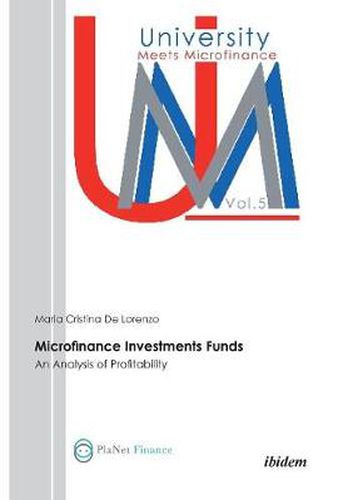Readings Newsletter
Become a Readings Member to make your shopping experience even easier.
Sign in or sign up for free!
You’re not far away from qualifying for FREE standard shipping within Australia
You’ve qualified for FREE standard shipping within Australia
The cart is loading…






This title is printed to order. This book may have been self-published. If so, we cannot guarantee the quality of the content. In the main most books will have gone through the editing process however some may not. We therefore suggest that you be aware of this before ordering this book. If in doubt check either the author or publisher’s details as we are unable to accept any returns unless they are faulty. Please contact us if you have any questions.
In the traditional financial system, profit and social solidarity have often represented a dichotomy hard to beat. In this scenario, the Microfinance Investment Vehicles (MIVs) are emerging as tools to build a bridge between private and social interests, increasingly in recent years, despite the fact that the world economy has been shaken by a strong global recession.After clarifying the often confused meaning of MIVs, Maria Cristina De Lorenzo utilises financial indicators like returns, Jensen’s alpha, Sharpe Index, Treynor Index, Beta, R-Squared to analyse the performance and the risk of a sample of ten MIVs over the last three years. She compares the results obtained to three benchmarks representing the overall equity market (Morgan Stanley Capital International World Index), the socially responsible investment market (Dow Jones Sustainability World Index), and the emerging bond market (J.P. Morgan Emerging Market Bond Index Global). Her study demonstrates that, in general, MIVs outperformed the benchmarks. They can successfully improve portfolio diversification because there is no positive correlation with broader markets (Beta parameters are next to zero).Ultimately, De Lorenzo aims to provide ways of research defining standard indicators of social performance associated with such investments in order to reinforce the idea that ethically and socially responsible funds are both a great financial and social opportunity for all involved.
$9.00 standard shipping within Australia
FREE standard shipping within Australia for orders over $100.00
Express & International shipping calculated at checkout
This title is printed to order. This book may have been self-published. If so, we cannot guarantee the quality of the content. In the main most books will have gone through the editing process however some may not. We therefore suggest that you be aware of this before ordering this book. If in doubt check either the author or publisher’s details as we are unable to accept any returns unless they are faulty. Please contact us if you have any questions.
In the traditional financial system, profit and social solidarity have often represented a dichotomy hard to beat. In this scenario, the Microfinance Investment Vehicles (MIVs) are emerging as tools to build a bridge between private and social interests, increasingly in recent years, despite the fact that the world economy has been shaken by a strong global recession.After clarifying the often confused meaning of MIVs, Maria Cristina De Lorenzo utilises financial indicators like returns, Jensen’s alpha, Sharpe Index, Treynor Index, Beta, R-Squared to analyse the performance and the risk of a sample of ten MIVs over the last three years. She compares the results obtained to three benchmarks representing the overall equity market (Morgan Stanley Capital International World Index), the socially responsible investment market (Dow Jones Sustainability World Index), and the emerging bond market (J.P. Morgan Emerging Market Bond Index Global). Her study demonstrates that, in general, MIVs outperformed the benchmarks. They can successfully improve portfolio diversification because there is no positive correlation with broader markets (Beta parameters are next to zero).Ultimately, De Lorenzo aims to provide ways of research defining standard indicators of social performance associated with such investments in order to reinforce the idea that ethically and socially responsible funds are both a great financial and social opportunity for all involved.